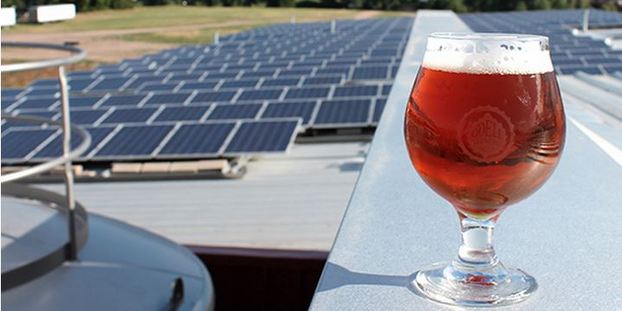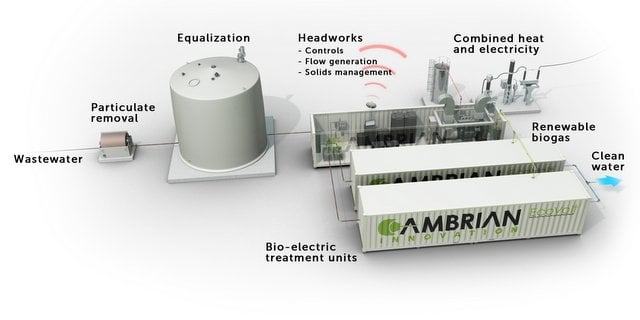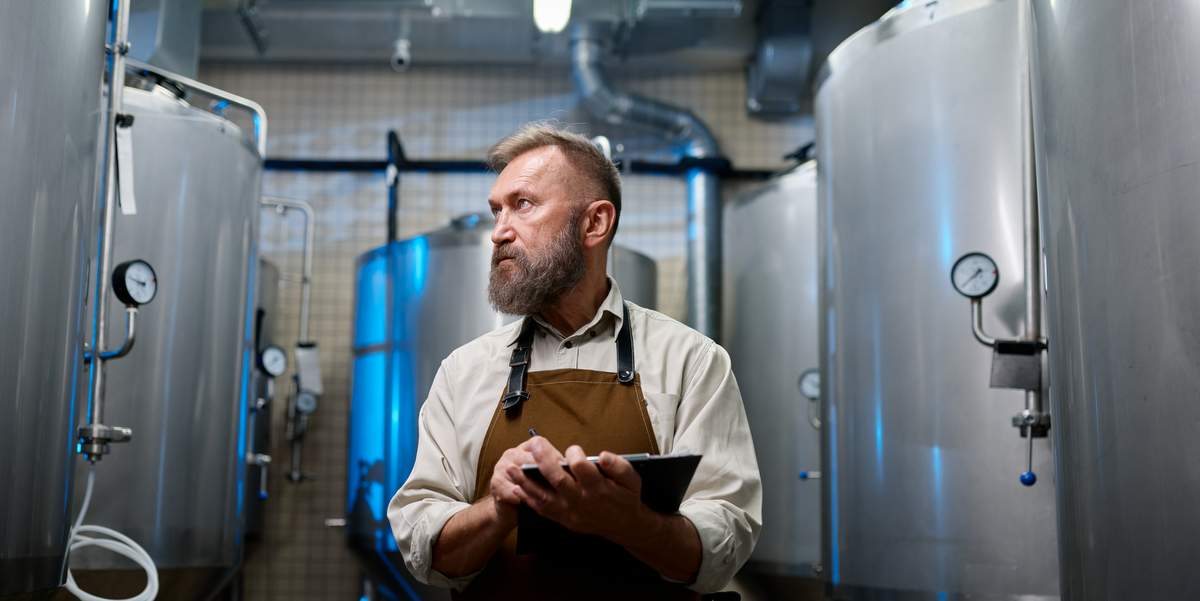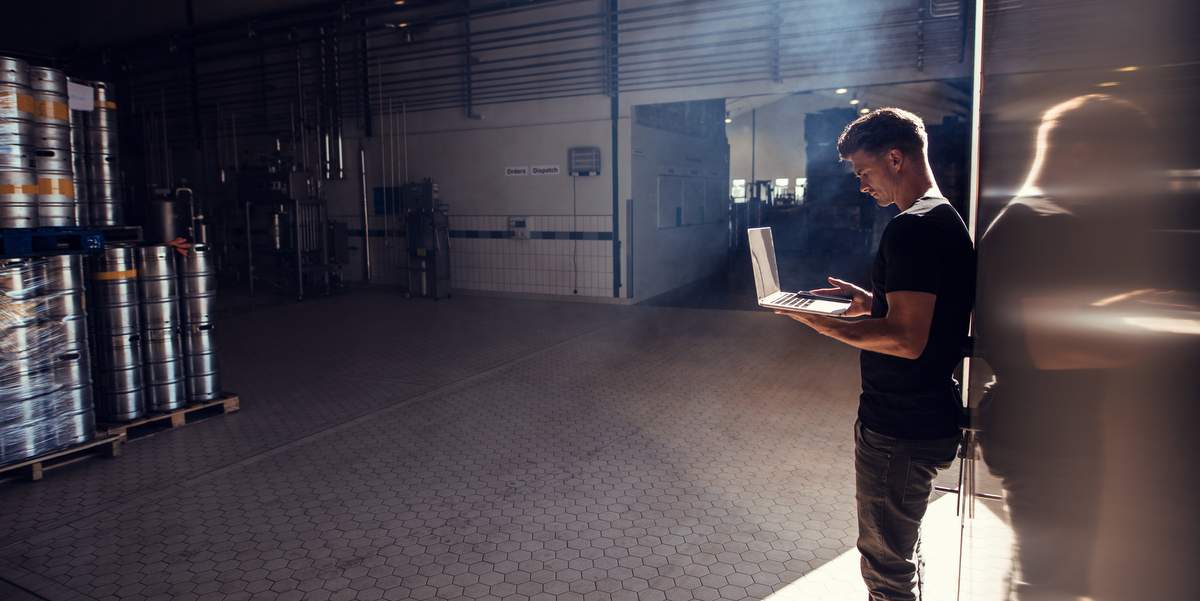
Like many industries, the brewing industry is guilty of gulping down energy and natural resources — an environmental issue that is leading major breweries to begin taking a more environmentally-conscious approach. Unfortunately, incorporating renewable energy and sustainability strategies into the brewing process can be costly. That said, companies with the financial means and resources required to make this jump can look to others, from long-established industry behemoths to popular up-and-comers, for inspiration and guidance.
In Part 1 of this series, we discussed how smaller breweries can play a part in reducing their industry’s environmental impact with sustainability solutions like carbon dioxide reclamation systems or compostable utensils. In this installment, we’ll discuss opportunities for larger breweries to implement renewable energy efforts (as well as related risks).
Both Budweiser and its parent company Anheuser-Busch InBev have publicly announced their goals to achieve 100 percent renewable energy in the near future. Anheuser-Busch claims that if they reach their goal, their carbon footprint would decrease by an impressive 30 percent. For Budweiser, a 100 percent transition would translate to removing 48,000 passenger vehicles from the road per year.
Other companies around the industry have slowly begun the transition as well, as indicated by the Brewers Association 2017 Sustainability Benchmarking Report. According to the report, participating craft breweries’ use of renewable energy increased from six to eight percent from 2014 to 2016. More and more breweries have started to embrace this change, but for those who haven’t yet, the idea may seem daunting.
Renewable energy in action
It seems that one of the greatest barriers to entry for renewable energy in the brewing process is a lack of awareness regarding the various options available. In fact, there are a variety of simple, executable strategies, as craft breweries have demonstrated in recent years. The Brewers Association laid out a few examples in their 2017 report, a few of which we highlight below.
One such example is a craft brewery in southern Ohio. Management sought strategies that would have a positive long-term impact on their community and their business. To accomplish this, they first implemented basic sustainability measures to redirect organic waste, among other things. Then, they adopted renewable energy, in the form of solar panels and an LED light system. The panels were designed to increase the efficiency of electricity production, reducing waste at their facility. When electricity demand goes beyond the capabilities of their solar panels, they purchase renewable energy certificates, which allow them to maintain their completely green production system.
Another case study comes from a larger craft brewery in Northern California. After learning the substantial size of their carbon footprint, they wanted to work on sustainability measures that could reduce their impact on the environment. As a result, they decided to install micro-turbine systems that would generate both steam and electricity, which cover the considerable electric needs of their brewery. A year later, they installed a 500 kilowatt storage battery to supplement their independent electricity storage capacity. They also implemented microturbines that run on biogas that they generate at their wastewater facility and work with their 600-kilowatt solar array. Together, these measures create a brewery that runs on a comprehensive renewable energy system.
A Colorado brewery utilizes biogas and solar power to generate the energy needed to brew. They take their production wastewater and clean it, which releases biogas. This biogas is then used to fuel their heat and power engines. They also have solar panels and electric arrays to help power the brewery and use a solar hot water system for a natural means of generating hot water.
Brewery best practices

As these examples indicate, there are several proven renewable energy strategies available that breweries can pursue to curb their negative environmental impact. These include:
Installing solar panels — Many breweries already have shifted toward solar power, but those that haven’t should strongly consider it. Solar panels are not only good for the environment, but in the long term they may help save money, as breweries will be able to cut their electricity costs by a significant margin.
Recycling waste products — This is an important sustainability practice for any company, and breweries can reuse their waste to fuel future production cycles, as the Colorado brewery did.
Consider wind energy — Budweiser’s 2019 Super Bowl commercial was a declaration that they would be powering their brewing process through wind-powered energy, and this is something that other breweries can consider as well. Wind energy provides breweries with the ability to generate energy 24 hours a day, as opposed to solar panels which require daylight.
Risks to consider
Renewable energy has the potential to be rewarding for all parties involved, provided it’s implemented thoughtfully and with care. When making the switch to renewable energy, breweries should take the time to consider their options and review how the change may impact operations. Large pieces of equipment like solar panels and water processing equipment are significant, costly investments that fundamentally change the brewery’s critical infrastructure.
In my experience with brewery insurance, I have seen claims for damages to solar panel installations, potable water treatment systems, wastewater treatment components and water tanks and pumps. In addition, we have seen claims for fire, vandalism, theft of parts and equipment breakdown, all in relation to sustainable infrastructure. Because this equipment is part of critical systems, we also see business interruption claims — which means a business had to shut down during repairs.
At the least, your insurer will need to add the new property to your insurance policy. Consult with your insurance representative before any significant investment to understand any potential risks that your brewery may be incurring.
Here, we’ve reviewed just a few of the many renewable energy and sustainable infrastructure options currently in use in breweries across the country. While many speculate that this sort of shift is unrealistic for most breweries due to pricing, the reality is that renewable energy is not only socially responsible, but it is also becoming more cost efficient. In 2015, Congress approved a bill permitting taxpayers to deduct up to 30 percent of their solar energy installation costs from federal taxes. Measures like this and the declining prices of solar energy have made the switch a much more financially viable option. Making the initial transition could be difficult for any company, but, in the long-term, it will be both financially and environmentally beneficial.
Justin Guerra is the creative director at PAK Programs.





Leave a Reply
You must be logged in to post a comment.